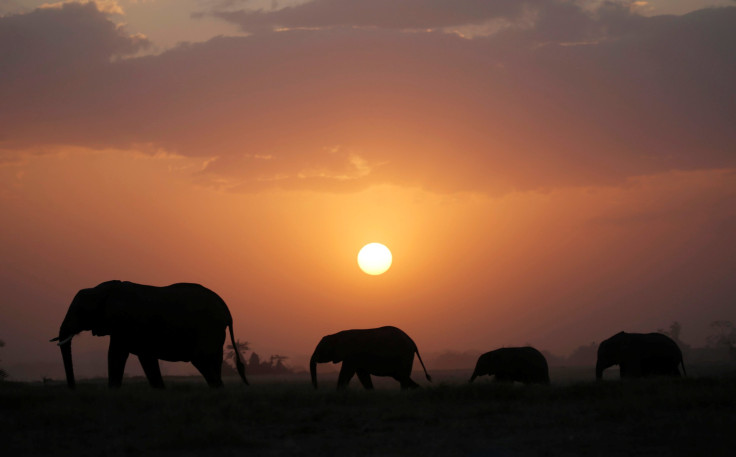Elephant Poaching Costs Africa’s Tourism Industry $25 Million A Year

Every year, poachers, driven by lucrative trade in illegal ivory, kill an estimated 20,000 African elephants. As a result, over the past decade, the population of African elephants has plummeted by over 20 percent.
The latest status report by the International Union for Conservation of Nature (IUCN), which estimates that the continent now has just 415,000 elephants, highlights the strong moral and ethical arguments for protecting the species from poachers. Now, a study published Tuesday in the journal Nature Communications provides an equally strong economic incentive to do so.
According to the study — co-authored by scientists from the World Wildlife Fund (WWF), the University of Vermont and the University of Cambridge — African countries lose roughly $25 million annually in tourism revenue as a direct result of the current poaching crisis.
“We know that within parks, tourism suffers when elephant poaching ramps up. This work provides a first estimate of the scale of that loss, and shows pretty convincingly that stronger conservation efforts usually make sound economic sense even when looking at just this one benefit stream,” study co-author Andrew Balmford from the University of Cambridge, said in a statement.
The research, which is the first continent-wide assessment of economic losses stemming from elephant poaching, also posits that for every dollar spent on protecting elephants in East, West and South Africa, one gets about $1.78 back.
“The average rate of return on elephant conservation in east, west, and south Africa compares favorably with rates of return on investments in areas like education, food security and electricity,” co-author Brendan Fisher from the University of Vermont, said in the statement.
However, for countries in Central Africa populated by forest elephants — the elusive subspecies that's less gregarious than the savanna elephants, and thus much harder to see — tourism is unlikely to contribute substantially to conservation. This puts the slow-breeding forest elephants, whose population in the continent dropped 65 percent between 2002 and 2013, at much greater risk than their savanna-inhabiting counterparts.
“In these remote, difficult-to-access areas where tourism levels are currently lower than in savannahs and where elephants, with few exceptions, are difficult to see, different funding mechanisms that capture public concern and the ‘existence value’ of elephants will be necessary to halt recent declines,” the researchers wrote in the study. “Our results additionally highlight that the conservation of biodiversity cannot always be justified from a purely financial point of view, and that the ‘use values‘ or ‘ecosystem services’ that biodiversity provides are complementary to, rather than substitutes for, moral or aesthetic reasons for conservation.”
© Copyright IBTimes 2024. All rights reserved.












